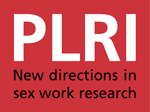Proposal to European Parliament recommending the Swedish Model
Mary Honeyball, Labour’s Spokesperson on the European Parliament’s Women’s Rights and Gender Equality Committee, has been a vocal supporter of anti-sex work legislation and has written a report to the European Parliament recommending the Swedish Model, which criminalises the purchase of sex. In a blog leading up to the discussion Alex Bryce and other prominent service providers in the UK condemn the move and encourage the Parliament to listen to sex workers. Year of publication: 2014 Theme: Human Rights and Law Research Ethics and Methods Author: Alex Bryce; Rosie Campbell and others Relevant URL: http://www.totalpolitics.com/blog/428222/a-response-to-mary-honeyball.thtml

